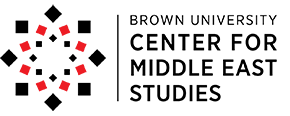Call for Papers: NAAIMS "Muslims and the City"
February 22, 2017
CALL FOR PAPERS
46th Annual Conference of theNorth American Association of Islamic and Muslim Studies (NAAIMS)
“Muslims and the City” Cosponsored By:
Islamic Civilizations and Societies Program Boston College
Chestnut Hill, MA
Friday, September 29, 2017 Deadlines:
Abstracts: March 6, 2017
Final Papers: August 25, 2017
The spread of Islam from its advent in the 7th century had an irreversible impact on the development of the city throughout the Muslim world from the Arabian Peninsula to Asia, Africa and Southern Europe. Since Islam covers religious, social, economic and legal aspects of life, the logic behind the design of the traditional Islamic city was influenced by Qur’anic principles. These principles highlighted religious practices, Shari’ah (Islamic law), social principles, and the science behind natural universal laws.
Since an integral part of the teachings of Islam include the concepts of authority, family structures and community relations, and social organizations, the traditional Islamic city reflected the socio- economic and religious needs of the Muslim community. During medieval times, the mosque, for example, became the single most important institution in the traditional Islamic city. The schools (madrasas) which provided religious instruction about Islam and the Qur’an were built in the courtyard next to the mosque, and the markets (suqs) which were bustling with trade provided the backdrop to an urban religion. The call to prayer (adhan) and Friday prayers (Juma’a) provided the component parts which further reinforced the development of an Islamic city. Inscriptions of Qur’anic verses became the main motif in architectural design on mosques, fountains, and madrasas in early Islamic towns because Qur’anic calligraphy reflected the living philosophy of Islam.
The design and layout of the city (7th century - 13th centuries) also assumed a functional role for physical defense during times of unrest, and environmental conditions, not only religious practices. For example, public fountains were found everywhere due to communal worship for performing ritual ablutions (wudu), and relieving heat due to weather conditions. Fountains in gardens, courtyards, town squares and even on the facades of Mosques also exemplified the central role water played in the construction of early Islamic cities in hot climates from the Arabian Peninsula to the Maghreb (Tunis and Rabat) and southern Europe (Cordoba in Muslim Spain).
How might a “traditional” Islamic city function in today’s digital age and address issues from natural and social science perspectives? Can it be instrumental in addressing the socio-economic and cultural identity crises in the modern Muslim world of the 21st century? What role can Islamic ideals of the “city” play in addressing the destruction brought on by wars?
We invite a diverse range of papers from professors and advanced Ph.D. candidates in the humanities and social sciences. Questions the papers might address include, but are not limited to the following:
- Art and Architecture
- Calligraphy and Qur’anic Inscriptions on Buildings
- Social Hierarchies
- The Virtuous City
- Interrelations between Communities
- Physical Design and Defense
- The Impact of Political Motives on the Virtuous City
- The Islamic Golden Age: Contributions to the West
- Early Islamic City Design Principles vs Modern Islamic Design
- Modern Urban Development and Social Identity Crisis
- Early Shura (consultative) Political Power System vs Ottoman Empire: Impact on Traditional Islamic City Design
- Modern Urban Development Strategy and the Islamic City
- Role of Architectural Design in Modern Islamic Cities
- Environmental Concerns
- Ethics of Deconstruction and Reconstruction
- Islamic Support for Green Cities
- Preservation of Heritage
Abstracts (250 words) Due by March 6, 2017:
ONLY Abstracts from Professors and Advanced Ph.D. Candidates will be Considered
- Abstracts will be evaluated according to following criteria: clear data & methodology used, relevance & contribution of proposal to conference theme. Abstracts must include a title, author’s full name, contact information, and university position (Professor or Ph.D. Candidate)
- Panelists required to pre-register & pay non-refundable fees by May 12, 2017. Online registration will be available
- Final papers must be submitted by August 25, 2017
- Send abstracts & final papers to Layla Sein, NAAIMS Executive Director, and Director of Academic Affairs at conferences@naaims.org
- Direct all questions to Layla Sein
Program Chair:
Prof. Kathleen Bailey, Boston College Chestnut Hill, MA
